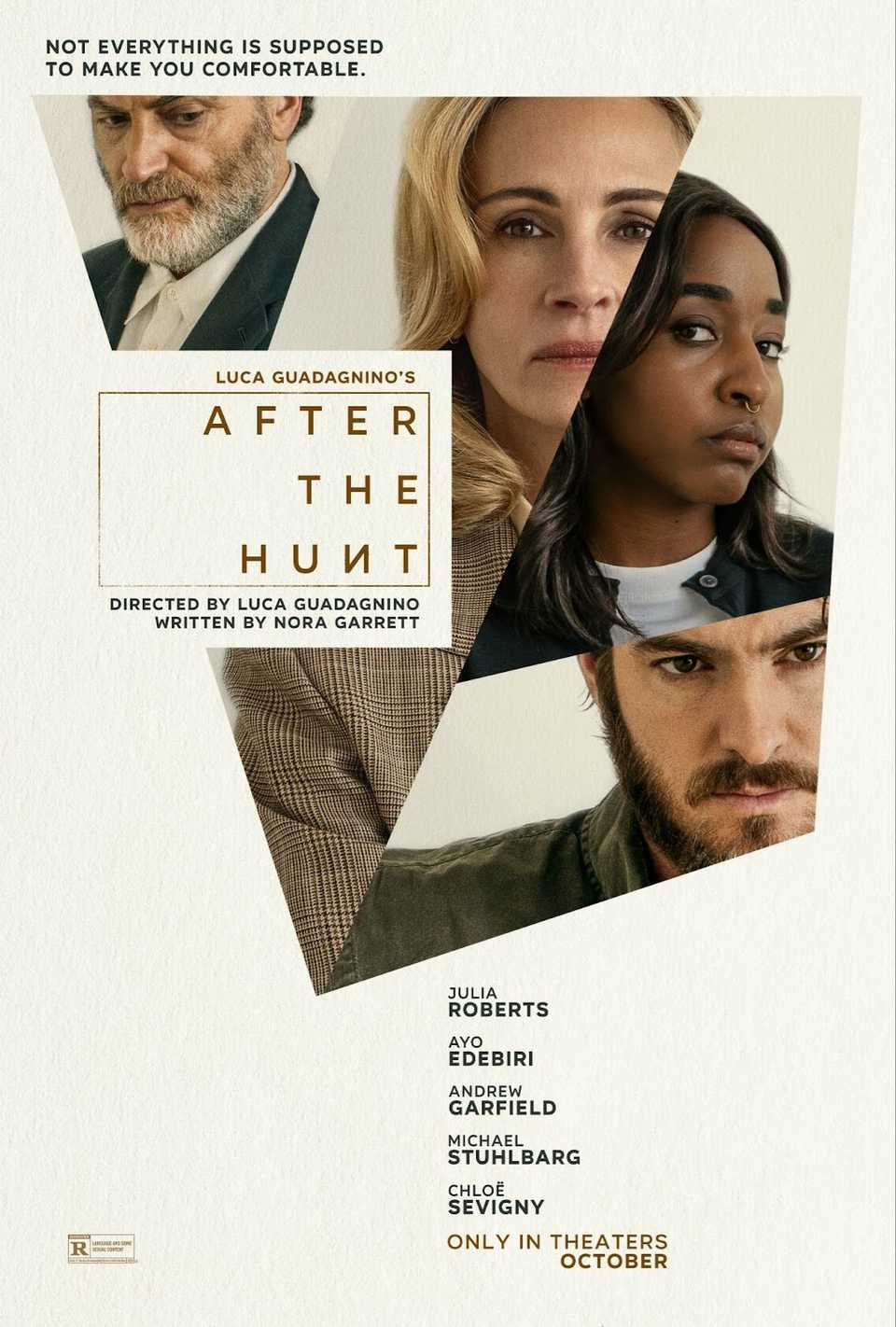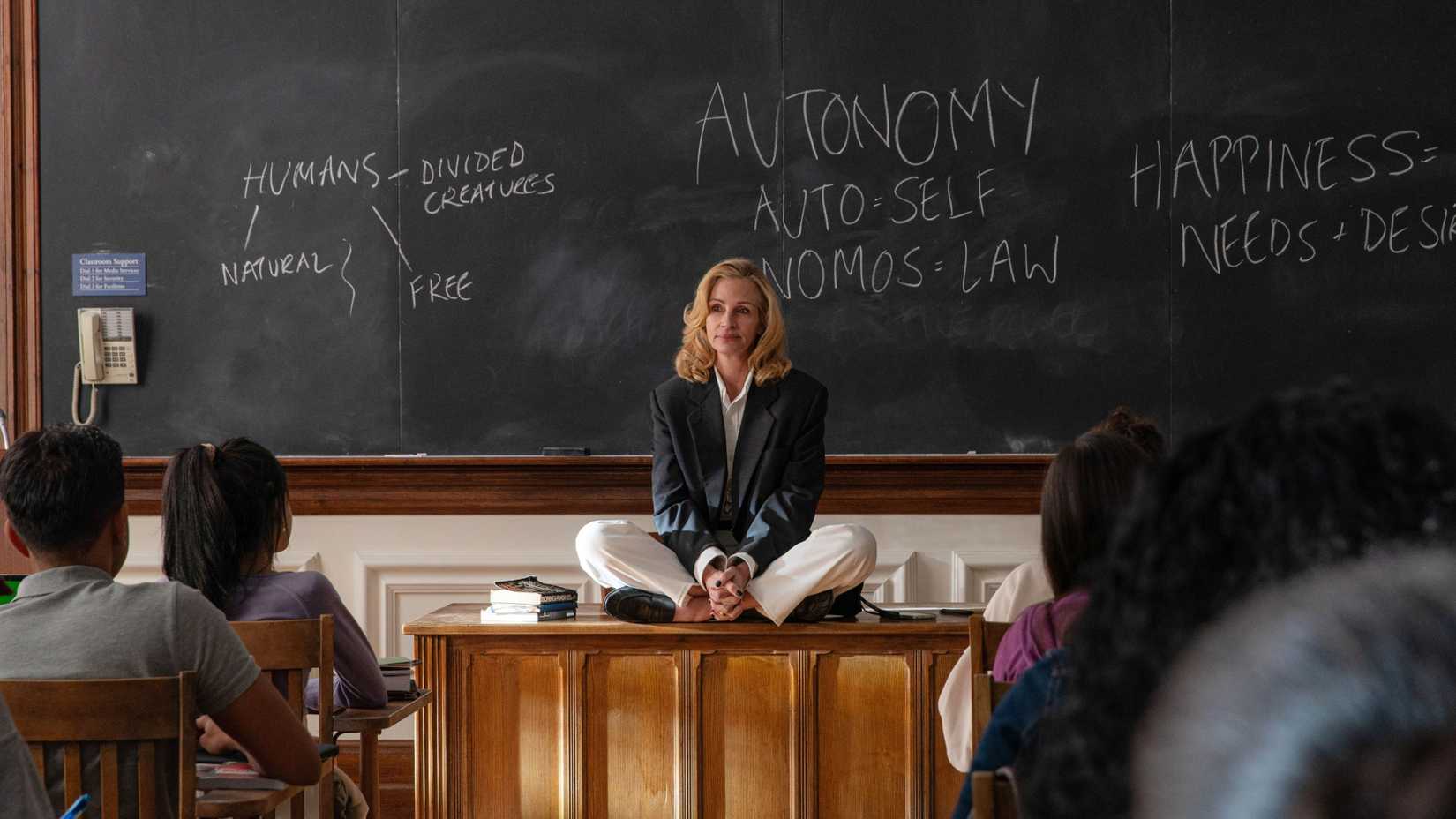Luca Guadagnino‘s latest film, After the Hunt, is decidedly on-brand for the prolific Italian director. It’s glossy, starry, and designed to invite controversy. Set in the world of elite academia in the era of the #MeToo movement, After the Hunt revolves around not one but two possible sexual assault cases. Ayo Edebiri plays Maggie, an ambitious student who’s gotten maybe a little too close with her professors, Alma (Julia Roberts) and Hank (Andrew Garfield). They happen to be going up against each other for tenure in the ethics and philosophy department, and they have a complicated relationship of their own.
In the aftermath of a party where all three were present, Maggie accuses Hank of crossing the line while taking her home, and she turns to Alma for support. As one might expect from this type of movie, After the Hunt poses more questions than it answers. It’s less about who did what and more about what happened as a result. Here’s what we know (and don’t know) when things conclude, and what it’s all supposed to mean.
A Major Revision Leaves One Ending Ambiguous
The Original ‘After the Hunt’ Script Was Very Different
The central mystery in the bound-to-be divisive After the Hunt is whether Maggie or Hank is telling the truth. She says that he came up to her apartment and refused to take “no” for an answer. He says she’s trying to ruin him after he questioned her academic integrity. The film doesn’t give the audience a concrete answer.
It should be noted that the original script was penned by actor and first-time screenwriter Nora Garrett. It caught the attention of studio executives as well as Guadagnino and Roberts, whose involvement helped to get the project off the ground. That script leaked online, and anyone who’s read it and seen the subsequent film surely noticed substantial changes. Garrett told IndieWire that she revised the story with input from Guadagnino, who said he wanted the changes to reflect reality.
In its first draft, it’s a little more obvious that Hank assaulted Maggie and fabricated the plagiarism accusation as a cover. That he and Alma have a sexual history is also much more explicit. In this case, Alma has to come to terms with her imperfect allyship as her doubts about Hank’s story compound, as well as her own extramarital involvement with a predatory man. In the movie, Maggie and Hank’s credibility is more or less on equal footing. The audience has seen Maggie scheme more pointedly, and they’ve seen Hank flirt and lose his temper. This not only puts the viewer in the position of having to come to their own conclusion, but it leaves Alma in that same position.
The consequences for Hank are the same in both versions. He’s tainted by the scandal and loses his job at Yale. They’re vastly different for Alma, however. Though whatever transpires between Maggie and Hank, and the fallout from it, is the A plot for most of the runtime of After the Hunt, it’s the B plot that actually resolves, involving Alma’s secret past.
Alma’s Ending Gets a More “True-to-Life” Update
At the beginning of After the Hunt, Maggie discovers a curious newspaper article and photo when she asks to use the bathroom at Alma’s party. The audience knows that the contents, context, and photo in that article will be important later on. The big revelation, which Maggie eventually uses to her advantage, is that Alma had an affair with a much older man, and when he called it quits, she accused him of rape as an act of revenge. Alma recanted, but the man, who was a family friend, committed suicide. With her reputation tarnished and conscience laden with guilt (and a serious substance abuse problem to show for it), the implication is that Alma’s more hesitant than the average ethics professor would be to entangle herself in he-said-she-said matters.
In the original ending, Alma confesses to her husband Frederik (who already knew), then flies back home to Sweden. She hopes to get some catharsis by meeting with the mother of the man with whom she’d had the affair, but it doesn’t happen, and her parents essentially tell her that everyone has to live with mistakes and no one really gets over anything.
In the film, Frederik tries to convince Alma that she was groomed by her father’s friend and not in the wrong. She was a teenager, after all, and wasn’t capable of seeing the situation for what it was. After the Hunt then flashes forward five years as Maggie and Alma meet again. Alma didn’t just get tenure; she’s dean of the department. For her part, Maggie shows off her engagement ring and tells Alma that she “won.”
Garrett said that Guadagnino lobbied for a heavily revised final 20 pages because he believed a person like Alma wouldn’t be defeated so easily. The script strands her in professional and psychological limbo. The movie demonstrates that the Maggie/Hank controversy was an obstacle that could be overcome on her way to success. If Garrett and Guadagnino were going for truth, one could rationalize that both endings mirror reality.
For some (like movie Alma), controversies really do recede into the past and are either excused or forgotten about. For others who’ve experienced being “canceled,” the consequences can be inescapable. But even when careers and relationships aren’t ruined, traumatic experiences can still be devastating. Alma is certainly self-destructive as a result of her past, regardless of whether she considers herself to be the victim or the villain.
The film ends as the action comes to a halt, and Guadagnino can be heard yelling, “cut.” This unusual choice seems to admit to the audience that what they’ve witnessed isn’t real life, but an artistic exercise meant to spur discussion about gender, moral transgressions, and cancel culture. No matter what one believes happened to or because of Maggie, Hank, and Alma, and no matter what anyone thinks of how successful After the Hunt is as a film, it’ll at least accomplish that. After the Hunt is playing in theaters now.

- Release Date
-
October 10, 2025
- Director
-
Luca Guadagnino
- Writers
-
Nora Garrett
Source link












![Bayanni talks musical origins in Nigeria, the inspiration behind his new EP ‘Love & Hustle’, creative process, and more [Interview] – EARMILK Bayanni talks musical origins in Nigeria, the inspiration behind his new EP ‘Love & Hustle’, creative process, and more [Interview] – EARMILK](https://i3.wp.com/earmilk.com/wp-content/uploads/2025/10/Singer-songwriter-Bayanni-Image-Supplied.webp?w=300&resize=300,200&ssl=1)


![Bayanni talks musical origins in Nigeria, the inspiration behind his new EP ‘Love & Hustle’, creative process, and more [Interview] – EARMILK Bayanni talks musical origins in Nigeria, the inspiration behind his new EP ‘Love & Hustle’, creative process, and more [Interview] – EARMILK](https://i3.wp.com/earmilk.com/wp-content/uploads/2025/10/Singer-songwriter-Bayanni-Image-Supplied.webp?w=74&resize=74,55&ssl=1)


Add Comment